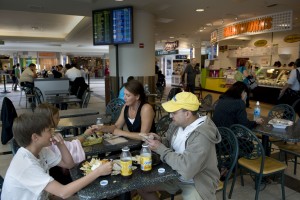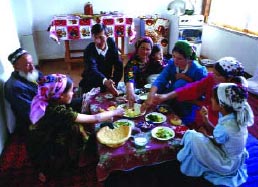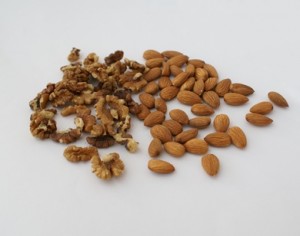Travelling for pleasure is usually something we eagerly anticipate: it can associate with a long wished for vacation, meeting family and friends, enjoying a different environment, in short: there is a bit of adventure attached to it.
Getting something to eat while you are in transit, however, can be a different story. Let me share a recent experience that my wife and I had on a transcontinental flight.
We had to get up shortly after 4 AM, and knowing that we would be in transit till later that evening we decided to prepare an early breakfast. As we usually do, we packed some plastic bags with travel snacks and stashed them away into our back packs: walnuts, almonds, apples, some cheese, some hard boiled eggs and a chocolate bar (70 % cocoa) for an indulgent dessert. It felt a bit unusual to sit down to a vegetable omelet, enjoy some berries and nuts and fix a cup of Americano at 5 in the morning, but we got over the early hour and enjoyed our breakfast. It was a good start to cope with a three-hour time switch that awaited us at the end of the trip.
After checking in at the airport we were greeted with the pleasant news, that our seat arrangement had been upgraded: we would travel first class, as they could not accommodate us in economy. To complete the sense of unexpected luxury, a full breakfast would be included. We did not expect any gourmet fare, but it was welcome news. After some time the flight attendants started to serve the meal. The choices were a cereal bowl or a scrambled egg skillet southwestern style for breakfast. My readers know already that I do not hold the breakfast cereal in high esteem. Cereal has the undesirable effect of sending blood sugar levels to unhealthy highs and as a result causing insulin spikes, so it is not a prudent choice in the first place. We asked for the scrambled eggs, cautiously enquiring: ‘What is in it?”
We were informed that it would be scrambled eggs with some black beans, green and red peppers, ham, onion and some cheese. It sounded really good, and we felt like a glutton having eaten a substantial breakfast at home and now getting some more! It turned out to be a bit different. The meal arrived. It was a flat skillet dish, which consisted of a thick layer of potato cubes held together by a yellow substance, which could not really be described as scrambled eggs. About half a dozen cubes of peppers were identifiable along with a few black beans. I started mining for onions and ham and tried to dig out the egg. It was virtually impossible! The amount of egg that I could retrieve was not more than 1 level tablespoon, and there were a few tiny specks of ham. My wife had the same experience. Needless to say, the skillets were almost full of potatoes, when we sent them back. The flight attendant came through one more time and offered a basket of croissants and buns to complete the breakfast, which we politely refused. As you see, we did not have any need to feel guilty about ingesting a second breakfast onboard, as this meal was simply unsuitable for anybody who was seeking balance in nutrition. To make it short: it is almost exclusively overfeeding the consumer with a load of dense carbohydrates (potatoes, croissants and buns), neglects a sensible amount of protein, and omits any healthy fat source. Out of sheer curiosity I flicked through the pages of an in-flight magazine that listed the foods that could be purchased on board for lunch. The results were not inspiring. There was an assortment of snack foods: potato chips, pretzels, super-size chocolate chip cookies, a candy bar that I had met before on TV and beef jerky. The meal selection featured three types of sandwiches: ham and cheese, brie and turkey breast, and a “loaded” super Italian affair with salami, which looked like a guarantee to a case of indigestion. The cheese plate was sold out and the fresh fruit plate was gone too. Sorry, no luck! As a matter of fact we were lucky and so were all the other passengers who came prepared with a stash of travel foods. When we got hungry towards noon we dug out our travel snacks, drank some water and were quite satisfied.
On our return trip, we traveled economy class (no upgrade to first class food or first class seats this time). It was another lengthy trip coast to coast, and as there were two lengthy layovers, the day was even longer. We arrived at one international airport at the East coast by lunchtime. This time we decided to get a meal at one of the numerous eating establishments. After all, just recently news articles had praised airport restaurants having embraced many healthy food choices. So this would not be airplane food but REAL food! We had some time to walk around and explore, and it turned out, that we certainly needed it! We salivated at the sight of a choice of mahi-mahi with a mixed salad at one café. Cautiously we wondered whether this would be grilled fish. No, we were told, this would be breaded and deep-fried! And it would not be offered in any other way. Too bad, this was not really what we wanted! An Asian food outlet offered a buffet-style assortment of food. It did look very good, and we loved the chicken and vegetable choice or the beef and broccoli with mushroom dish. It did look fresh and appetizing. Often Asian foods can contain MSG. We wanted to make sure that this substance would not be in the food at this place. Sorry, we were told, all the meats and vegetables did contain MSG! Monosodium glutamate is not a harmless flavor enhancer. It belongs into the group of excitotoxins. The substance can destroy brain cells. It also has the potential to give you a nasty headache, especially if larger quantities are used. We were looking for food minus a headache, so we walked away once again and looked for more. An Italian bistro offered the usual suspects: piles of pasta and pizza! And there was a bakery with towering-high tortes, cinnamon buns, and muffins. It was overfeeding of the already carbo-holic individual and under nourishing the traveller. Sad!
After this expedition through the terminal we did finally find a meal that would sustain us until the evening. It was a pre-packaged Thai salad. It was certainly nothing fancy, but it contained a large amount of lettuce and other salad vegetables, offered a small but appropriate amount of cooked shredded real chicken, not some processed salty fake meat, and a small container of salad dressing on the side. It was enough to feel pleasantly full without feeling stuffed and good enough to keep us going till the evening.
Yes, we really wanted a touch of luxury for dessert! We thought of the duty free shop and envisioned a square or two of sinfully dark chocolate. Actually, this is not sinful at all! Have a piece of chocolate with over 70 % cocoa content or even 85%. It is not bitter, but an explosion of flavor on your taste buds, and it happens to be a source of anti-oxidants and bioflavonoids. It lowers high blood pressure and gobbles up free radicals, and as a result it can protect you from heart disease. One word of caution: use moderate amounts! Two or three squares only, not more, please!
And there was chocolate at the duty-free shop, lots of it! There were praline selections in large varieties, and there were Lindt and Ghirardelli chocolate bars, two well-known brands! We rejoiced…but too early! There were six packs featuring extra-creamy, sea-salt, caramel, chocolate and chili. As we studied the labels it was very obvious, that this was not at all what we were looking for! One bar in six was of excellent quality with a high cocoa percentage. The rest was a “gourmet mix”, all of them with low cocoa percentage and high sugar content, which really means it was useless. Were we willing to waste our money on half a dozen chocolate bars of which just one single bar was the merchandise we wanted? The answer was no! And of course, the package could only be sold this way; sorry, no choice! After leaving the duty free store with all its high-class brands behind, we found a humble news and magazine outlet. It had nice, entertaining reads to shorten the next leg of our journey. And-what a surprise! There was a stack of chocolates by an unknown European manufacturer with an 85 % cocoa content. Lucky us! An interesting magazine and dessert too! Bon voyage!
Conclusion
We do not think that we are the only health conscious persons on the planet. We hope that someone in charge in any airport or in an airline catering company smells a business opportunity. We are not demanding. We just prefer healthy foods and it would be great to find a meal choice with whole foods such as greens, vegetables, wild salmon, organic chicken, or grass-fed antibiotic-free beef. There is no need for anything elaborate. It’s really back to the basics! Even a mixed salad with a healthy protein portion would fit in very well. It is time that not just a few high class chefs around the world take notice of the new changes of a healthy diet that I summarized in this blog recently: “Buying Into High Carb, Low Fat Myth Makes You Sick”. In case you want to read more, I am in the process of publishing a book, which also contains 7 days of healthy menus at the end of it. It will be published early in 2014 through Amazon.com and is entitled: “A Survivor’s Guide To Successful Aging” (addendum Nov.7, 2014: It has been published March 31, 2014).
Last edited Nov. 7, 2014








